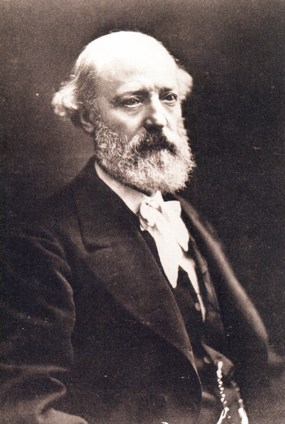
National Park Service, Statue of Liberty NM Eugène Viollet-le-Duc, born on January 21, 1814 in Paris, France, was the first architect hired to design the internal structure of the Statue of Liberty. He was hired by Frédéric-Auguste Bartholdi, the sculptor of the Statue of Liberty, who was one of Viollet-le-Duc's former students. In his designs, Viollet-le-Duc wanted to rely solely on sheer weight to support the Statue's copper skin. Therefore, he suggested that sand-filled masonry compartments be constructed within the Statue. Viollet-le-Duc also advised Bartholdi to sculpt the Statue's skin using the repoussé technique - the process of molding light-weight copper sheets by hammering them onto the Statue's wooden framework. Once molded, these sheets would be attached to each other with the use of armature bars. Lastly, Viollet-le-Duc helped Bartholdi design Miss Liberty's torch and the support system for her arm. When Viollet-le-Duc died unexpectedly on September 17, 1879, Bartholdi turned to Gustave Eiffel to design the Statue's internal structure. Viollet-le-Duc's ideas however were not forgotten or unappreciated. Although Eiffel designed a completely new support system for the Statue, Viollet-le-Duc's brilliant armature bar usage and repoussé technique were retained. |
Last updated: December 30, 2024
